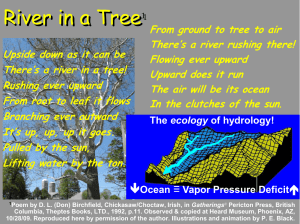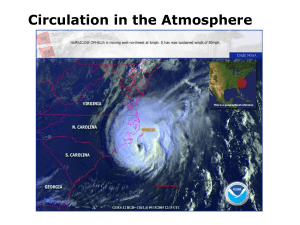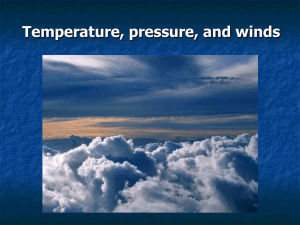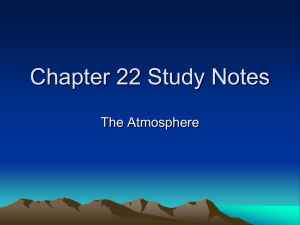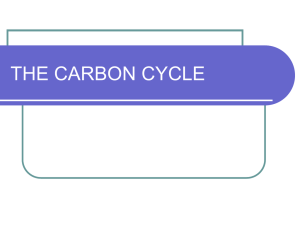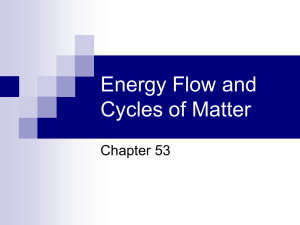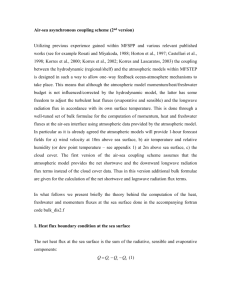PPT
advertisement
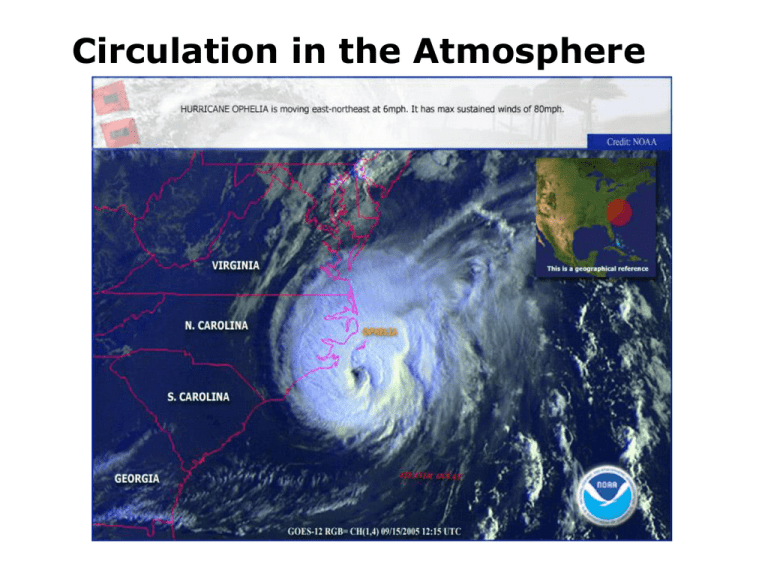
Circulation in the Atmosphere Circulation in the atmosphere Balance of forces in the fluid motion • Forces due to planetary rotation – Centrifugal force Geoid – Coriolis force Deflection of moving fluid • Pressure gradient force – From high to low pressure Deflection of air flow due to Coriolis force Low Pressure _ Surfaces of constant pressure y (latitude) p y x (longitude) + High Pressure Balanced flow: geostrophic balance F pressure Low Pressure High Pressure F Coriolis 1) 2) 3) 4) Coriolis force 90 degrees to the right Pressure force down the gradient Air flows along the line of constant pressure Particles will have the high pressure on their right (opposite in the southern hemisphere) Geostrophic circulation • What would be the direction of (1) the pressure force and (2) the Coriolis force in geostrophic balance? • What would be the direction of geostrophic flow? L H Cyclonic Anti-cyclonic Geostrophic circulation Now we are in the Southern Hemisphere, what would be the direction of the geostrophic flow? L H Cyclonic Anti-cyclonic Tropical cyclone: an intense low pressure system H L H H H Air circulates around the low pressure Flow under radial pressure gradient • A bucket full of water • Open up a hole in the middle - Generates a low pressure • What would happen to the water? - Non-rotating - Rotating Tropical cyclones Coriolis effect Air flows around the low pressure counter-clockwise Energy source Warm, moist air from tropical ocean Storm surge Graphic illustration by National Hurricane Center http://www.nhc.noaa.gov/surge/animations/hurricane_stormsurge.swf Atmosphere-ocean interaction What are the ways that the Earth’s atmosphere and ocean interact? Wind-driven ocean currents Atmospheric winds applies frictional force on the surface waters Ocean waves Wind-driven circulation (next week) Water cycle Implications to the salinity of seawater? Temperature ITCZ Warm SST, low SSS Excess precipitation Salinity Subtropics Warm SST, high SSS Excess evaporation Sea surface temperature and salinity are controlled by air-sea interaction 4 components of air-sea heat flux • Incoming shortwave radiation – Latitudes, cloud cover • Outgoing longwave radiation – Temperature, water vapor, cloud cover • Sensible heat flux – Boundary layer turbulence • Latent heat flux – Evaporation Shortwave radiation • Climatology • Average over long time period (1968-1996) – Upward positive (positive into the atmosphere) Factors controlling SW radiation • Latitude • Cloudines (albedo) Longwave radiation • Climatology (1968-1996) – Upward positive (positive into the atmosphere) Longwave radiation • SST, cloud and water vapor Sensible heat flux • Climatology (1968-1996) – Upward positive (positive into the atmosphere) – Turbulent heat exchange between ocean and atmosphere Sensible heat flux • Driven by surface wind speed and air-sea temperature difference Latent heat flux • Climatology (1968-1996) – Upward positive (positive into the atmosphere) – Proportional to the rate of evaporation Latent heat flux • Rate of evaporation - Wind speed and relative humidity Net heat flux • Climatology (1968-1996) – Upward positive (positive into the atmosphere) Ocean heat transport • Ocean gains heat from the atmosphere in tropics • Ocean circulation transports heat poleward, and release back to the atmosphere at high latitudes Biogeochemical cycle (in October after midterm)
